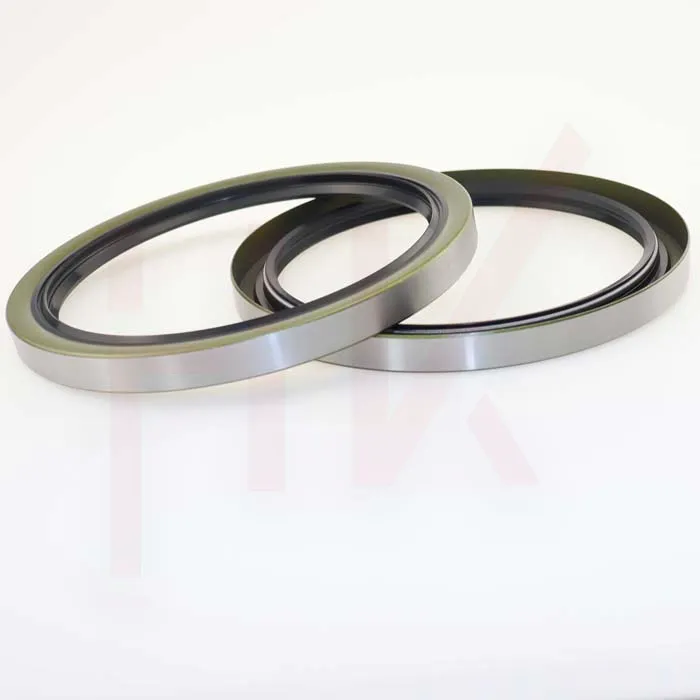Samh . 25, 2024 20:34 Back to list
Comparing Dust Seals and Oil Seals for Optimal Performance and Protection
Dust Seal vs. Oil Seal Understanding Their Differences and Applications
In the world of mechanical engineering and manufacturing, seals play a critical role in the performance and longevity of machines. Two important types of seals, dust seals and oil seals, serve very different purposes but are often discussed in close relation to one another. Understanding the differences between these two types of seals can help businesses and engineers choose the right component for their applications.
What is a Dust Seal?
A dust seal, also known as a dust cover or protective seal, is primarily designed to prevent dust, dirt, and other contaminants from entering a machine or mechanical assembly. These seals are typically utilized in environments where particulate matter can cause significant wear and tear on moving parts. For instance, in off-road vehicles, construction equipment, or industrial machinery operating in dusty conditions, dust seals are critical for protecting bearings, gears, and other components from abrasive particles.
Dust seals are generally made of flexible materials like rubber or silicone, which allow them to form a tight fit around the moving parts they protect. Their design may include lips or flanges that create a barrier against external contaminants while allowing internal components to operate smoothly. Common applications for dust seals include wheel bearings, hydraulic cylinders, and various types of rotating machinery.
What is an Oil Seal?
In contrast, an oil seal (sometimes referred to as a fluid seal or grease seal) is specifically designed to retain lubricating oils and prevent leaks. These seals are vital in systems where lubrication is needed for proper operation, such as in engines, gearboxes, and pumps. An oil seal's primary function is to ensure that the lubricant stays within the designated area while simultaneously preventing contaminants from entering.
dust seal vs oil seal

Oil seals often have a more complex design compared to dust seals. They usually consist of a rubber lip that makes contact with a shaft or surface, creating a seal that keeps oil inside while blocking outside elements. The material used for oil seals must be resistant to the specific type of oil or fluid being contained, as well as to temperature fluctuations and pressures typical in the operating environment.
Key Differences
1. Functionality The primary difference between dust seals and oil seals lies in their intended purpose. Dust seals protect against external contaminants, while oil seals are designed to retain lubrication within the system.
2. Design and Material Dust seals are typically made from softer materials to allow flexibility and form a barrier against particulates, while oil seals often require more robust materials to withstand the pressures and temperatures associated with hydraulic or mechanical systems.
3. Applications While both types of seals are used in rotating machinery, they are applied in different contexts. Dust seals find their place in environments with high levels of particulate matter, whereas oil seals are used wherever lubrication is necessary to prevent wear.
Conclusion
The choice between a dust seal and an oil seal depends largely on the specific requirements of the application. Understanding their differences helps engineers and technicians ensure that the correct seal is utilized for optimal performance and longevity of machinery. In some cases, both types of seals may be required in tandem to provide comprehensive protection against both contaminants and fluid leakage. In any case, selecting the right seal is crucial for maintaining the efficiency and reliability of mechanical systems, safeguarding investments, and reducing the risk of breakdowns.
-
TCN Oil Seal Metal Ring Reinforcement for Heavy Machinery
NewsJul.25,2025
-
Rotary Lip Seal Spring-Loaded Design for High-Speed Applications
NewsJul.25,2025
-
Hydraulic Cylinder Seals Polyurethane Material for High-Impact Jobs
NewsJul.25,2025
-
High Pressure Oil Seal Polyurethane Coating Wear Resistance
NewsJul.25,2025
-
Dust Proof Seal Double Lip Design for Construction Equipment
NewsJul.25,2025
-
Hub Seal Polyurethane Wear Resistance in Agricultural Vehicles
NewsJul.25,2025
-
The Trans-formative Journey of Wheel Hub Oil Seals
NewsJun.06,2025
Products categories
















